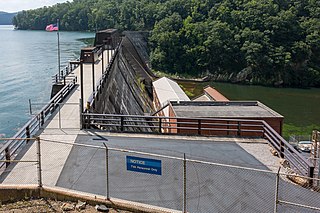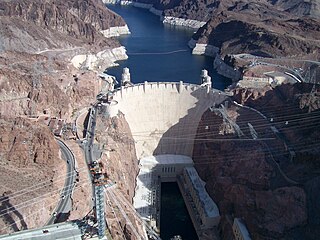Related Research Articles

D.B. Cooper is a media epithet for an unidentified man who hijacked Northwest Orient Airlines Flight 305, a Boeing 727 aircraft operated by Northwest Orient Airlines, in United States airspace on November 24, 1971. During the flight from Portland, Oregon, to Seattle, Washington, the hijacker told a flight attendant he was armed with a bomb, demanded $200,000 in ransom, and requested four parachutes upon landing in Seattle. After releasing the passengers in Seattle, the hijacker instructed the flight crew to refuel the aircraft and begin a second flight to Mexico City, with a refueling stop in Reno, Nevada. About 30 minutes after taking off from Seattle, the hijacker opened the aircraft's aft door, deployed the staircase, and parachuted into the night over southwestern Washington. The hijacker was never identified, apprehended, or found.

The Boeing 727 is an American narrow-body airliner that was developed and produced by Boeing Commercial Airplanes. After the heavy 707 quad-jet was introduced in 1958, Boeing addressed the demand for shorter flight lengths from smaller airports. On December 5, 1960, the 727 was launched with 40 orders each from United Airlines and Eastern Air Lines. The first 727-100 rolled out November 27, 1962, first flew on February 9, 1963, and entered service with Eastern on February 1, 1964.

Hydroelectricity, or hydroelectric power, is electricity generated from hydropower. Hydropower supplies one sixth of the world's electricity, almost 4500 TWh in 2020, which is more than all other renewable sources combined and also more than nuclear power. Hydropower can provide large amounts of low-carbon electricity on demand, making it a key element for creating secure and clean electricity supply systems. A hydroelectric power station that has a dam and reservoir is a flexible source, since the amount of electricity produced can be increased or decreased in seconds or minutes in response to varying electricity demand. Once a hydroelectric complex is constructed, it produces no direct waste, and almost always emits considerably less greenhouse gas than fossil fuel-powered energy plants. However, when constructed in lowland rainforest areas, where part of the forest is inundated, substantial amounts of greenhouse gases may be emitted.

The Blue River is a tributary of the Colorado River, approximately 65 miles (105 km) long, in the U.S. state of Colorado.

Cushman Dam No. 2 is a hydroelectric dam on the North Fork of the Skokomish River in Mason County, Washington, United States, forming Lake Kokanee. Built in 1930, its three 27,000 kilowatt generators provide 233 million kilowatt-hours annually to the Tacoma Power system. Along with Cushman Dam No. 1, it is part of Tacoma Power's Cushman Project.

An airstair is a set of steps built into an aircraft so that passengers may board and alight the aircraft. The stairs are often built into a clamshell-style door on the aircraft. Airstairs eliminate the need for passengers to use a mobile stairway or jetway to board or exit the aircraft, providing more independence from ground services. Some of the earliest aircraft to feature airstairs were the Martin 2-0-2 and Martin 4-0-4. Some models of the Douglas DC-3 were also retrofitted with airstairs. As airport infrastructure has developed, the need for airstairs has decreased, as jetways or mobile stairways are often available.

The Dnieper Hydroelectric Station, also known as Dneprostroi Dam, in the city of Zaporizhzhia, Ukraine, is the largest hydroelectric power station on the Dnieper river. It is the fifth step of the Dnieper cascade of hydroelectric stations that provides electric power for the Donets–Kryvyi Rih Industrial region. The Dnieper Reservoir stretches 129 km upstream to near Dnipro city.

Ariel is an unincorporated community in Cowlitz County, Washington. Ariel is located 11 miles (18 km) northeast of the city of Woodland along Washington State Route 503, situated north of the Lewis River and on the northwest bank of Lake Merwin. The Ariel community is part of the Woodland School District, a K-12 school district of about 2,200 students.

Wilson Dam is a dam spanning the Tennessee River between Lauderdale County and Colbert County in the U.S. state of Alabama. Completed in 1924 by the United States Army Corps of Engineers, it impounds Wilson Lake, and is one of nine Tennessee Valley Authority (TVA) dams on the Tennessee River. The dam was declared a National Historic Landmark on November 13, 1966, for its role as the first dam to come under the TVA's administration. The dam is named for former President of the United States Woodrow Wilson.

Lake Marion is the largest lake in South Carolina, centrally located and with territory within five counties. The lake is referred to as South Carolina's inland sea. It has a 315-mile (507 km) shoreline and covers nearly 110,000 acres of rolling farmlands, former marshes, and river valley landscape.

Yale Dam is a 323-foot high earth-type hydroelectric dam on the Lewis River, in the U.S. state of Washington, owned by PacifiCorp. It is located on the border between Cowlitz County and Clark County. Its reservoir is called Yale Lake. The dam's power plant capacity is 134 megawatts.

Lake Merwin is a reservoir on the Lewis River in the U.S. state of Washington. It lies on the border between Clark County and Cowlitz County. It was created in 1931 with the construction of Merwin Dam.

Ocoee Dam Number 1 is a hydroelectric dam on the Ocoee River in Polk County in the U.S. state of Tennessee. The dam impounds the 1,930-acre (780 ha) Parksville Reservoir, and is the farthest downstream of four dams on the Toccoa/Ocoee River owned and operated by the Tennessee Valley Authority. Completed in 1911, Ocoee No. 1 was one of the first hydroelectric projects in Tennessee.

Hydroelectricity is, as of 2019, the second-largest renewable source of energy in both generation and nominal capacity in the United States. In 2021, hydroelectric power produced 31.5% of the total renewable electricity, and 6.3% of the total U.S. electricity.

Harris Station Dam is a hydroelectric dam in Northeast Somerset, Somerset County, Maine. Also known as the Indian Pond Project, the dam was built from 1952 to 1954 as the largest hydroelectric dam in the state of Maine. It impounds the Kennebec River at the southern end of the natural Indian Pond, about 12 miles (19 km) downstream from Moosehead Lake.

Pinopolis Dam is a dam in Berkeley County, South Carolina.

Abiquiu Dam is a dam on the Rio Chama, located about 60 miles (97 km) northwest of Santa Fe in Rio Arriba County, New Mexico. Built and operated by the U.S. Army Corps of Engineers (USACE), the dam is an earth embankment structure 354 feet (108 m) high and 1,800 feet (550 m) long, containing 11.8 million cubic yards of fill. The dam forms Abiquiu Lake, one of the largest lakes in New Mexico with a full storage capacity of 1,369,000 acre-feet (1,689,000 dam3) and 5,200 acres (2,100 ha) of water. To date, the reservoir has never filled to capacity, with a record high of 402,258 acre-feet (496,178 dam3), 29.4% of full pool, on June 22, 1987. The dam's primary purpose is flood control, in addition to irrigation and municipal water storage, and hydroelectric generation.
References
- 1 2 3 4 5 6 Merwin Dam Archived 2011-07-16 at the Wayback Machine , NPDP Dam Directory
- ↑ "Merwin Hydroelectric Project" (PDF). Final License Application. PacifiCorp. Archived from the original (PDF) on 7 August 2012. Retrieved 10 May 2012.
- ↑ U.S. Geological Survey Geographic Names Information System: Merwin Dam
- ↑ In Search Of..."D. B. Cooper" hosted by Leonard Nimoy, produced by Alan Landsburg c. 1979